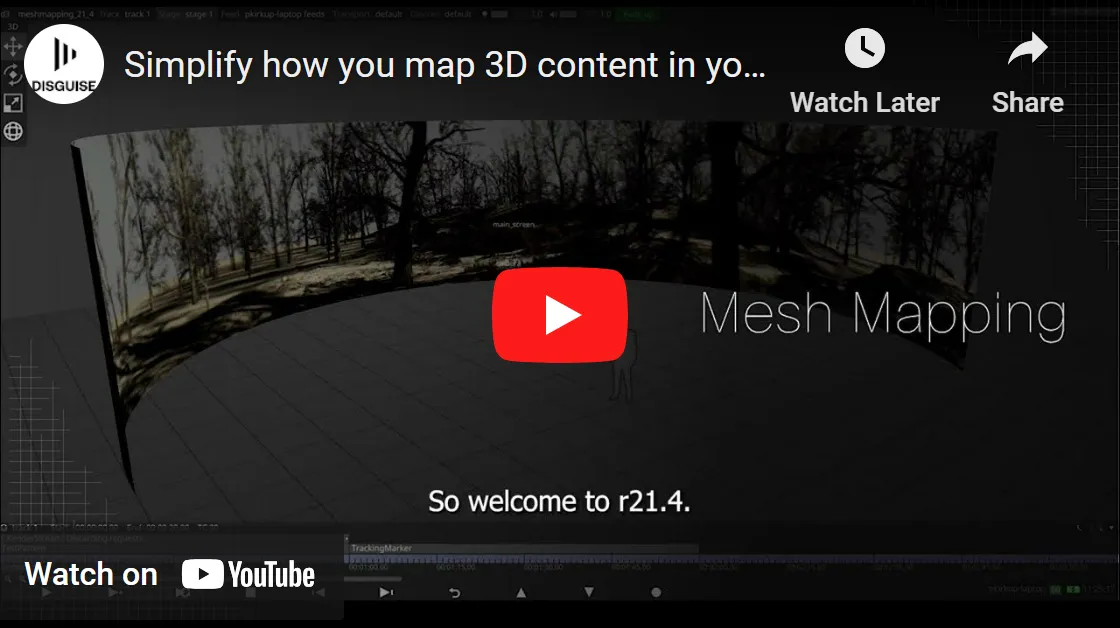Mesh Mapping
Mesh Mapping enables you to easily set up a screen projection that automatically adjusts to the extent of the surface you’re targeting.
As of r21.4, experience more creative flexibility when mapping 3D content onto your volume.
This type of Mapping is aware of the surfaces that it’s mapping toward even when dealing with UV mapped surfaces, screens, and things within your space.
See How it Works
Section titled “See How it Works”Workflow
Section titled “Workflow”Mesh mappings are in the same locations as other types of managers, from within a layer’s Mapping field. For instance, in this video, the Mesh Mapping has been created from within the RenderStream Layer’s Channel Mapping field.
Typical content mapped to surfaces via RenderStream is perspective projected and then cropped off by the geometry within our stage, which is inefficient. Mesh Mapping allows us to create a perspective render from an eye point that you define so that only the pixels that are relevant to that particular mesh are streamed across RenderStream.
When using a mesh mapping, the content being delivered from the render engine will be rendered from the perspective of the eyepoint that you determine in the mesh mapping before it’s delivered to the target surface within Designer. This is very efficient from a bandwidth perspective as RenderStream only sends the exact pixels that the screen needs.
Increasing the pool size also allows the mesh to be subdivided into multiple perspectives that will line up to create a single contiguous scene.
Mesh mappings also support rendering to surfaces greater than 180 degrees. When the cluster assigner’s channel mapping targets the Mesh mapping, Designer will determine that it needs more render instances based on available bandwidth and resolutions within the individual fragments, subdividing until it reaches the appropriate amount of fragments to match the screen resolution.
Resolution Scale is another feature available when using a mesh mapping. It allows you to reduce the scale of your content in order to decrease the number of fragments that your mesh mapping needs to provide full coverage around the volume.
Using Mesh Mapping in a Cluster Workload for an Inner & Outer Frustum Setup
Section titled “Using Mesh Mapping in a Cluster Workload for an Inner & Outer Frustum Setup”- Setup a single channel within your Cluster Workload that is targeting MR set (backplate)
- Create another channel that targets a mesh mapping. For a pool size of 2, this will generate 2 streams for the mesh when RenderStream is started.
- Be sure to use the same scene origin object in both so that they have the same reference point.
- Start the RenderStream workload. You will see 3 total streams across the RenderStream network as it receives the renders for both in-frustum and out-frustum.
